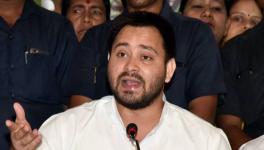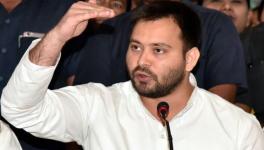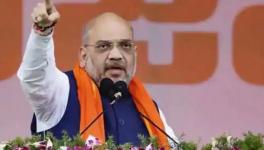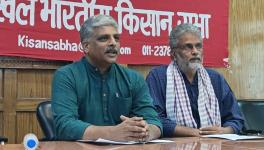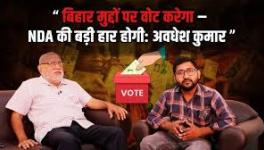Bengaluru Opposition Meet: Two Unifiers and a Braveheart
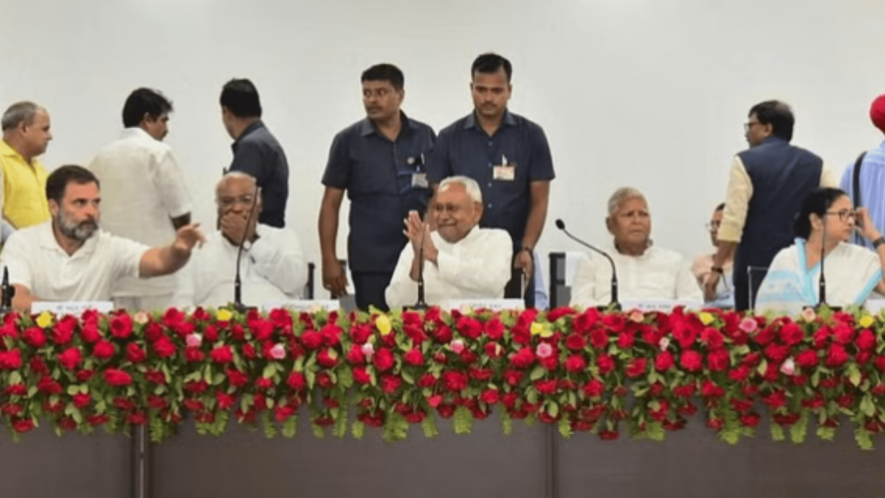
The leaders from Opposition parties during a joint press conference after their meeting, in Patna, on June 23. Image Courtesy: PTI
“Nitish Kumar has grown enormously in his political stature and acceptance at the national level in the last year or so,” said a very senior Rashtriya Janata Dal (RJD) leader when I recently quizzed him about his assessment of the Bihar Chief Minister and Janata Dal (United) leader in terms of his role in uniting the opposition parties against the Bharatiya Janata Party (BJP).
In fact, Nitish Kumar had lost heavily on the political credibility score when he switched to the National Democratic Alliance in 2017 after winning the 2015 Assembly election with the RJD and the Congress. It’s not that there might not have been “provocations” from the RJD, the largest party with more muscle. Ostensibly, Nitish Kumar made the Central Bureau of Investigation charge his deputy Tejashwi Yadav in a corruption case as a pretext to leave the JDU-RJD-Congress alliance and get back to the National Democratic Alliance (NDA).
But Nitish Kumar failed to convince the opposition parties about his decision. His manner of switching political affiliation in 2017 substantially differed from 2013. In 2012 he announced that he would leave the NDA if the BJP projected his then-Gujarat counterpart, Narendra Modi, as the prime ministerial candidate. The BJP leadership, at its meeting at Goa, nominated Modi as the party’s campaign committee’s chairman—a prelude to making him prime minister candidate—and Nitish soon ended his ties with the BJP and, around a year later, formed a Mahagathbandhan with the RJD and Congress that trounced the BJP in 2015 Assembly election in Bihar.
After he switched sides in 2017, Nitish Kumar managed to retain his position as Chief Minister, but Prime Minister Modi carried on with his megalomaniac approach, ignoring him and rejecting his demands for Bihar. Moreover, the BJP hurt Nitish’s interests in the 2020 Assembly election by pitting Chirag Paswan’s Lok Janshakti Party against his JDU from behind the scenes. As a result of this, the JDU was reduced to 45 MLAs. Subsequently, the Hindutva party tried to break the JDU on the lines of the Shiv Sena in Maharashtra, Janata Dal (Secular) in Karnataka and Congress in Madhya Pradesh.
Unifier Avatar
After joining the RJD-JDU-Congress-Left Mahagathbandhan on August 22, Nitish Kumar gained more than he lost than when he gave the BJP company from 2017 to 2022. He has emerged as a unifier. Few entertained the thought that the West Bengal Chief Minister Mamata Banerjee, who was talking about a non-Congress and non-BJP “third front”, would ever join a platform with the Congress. In Uttar Pradesh, Samajwadi Party president Akhilesh Yadav had rejected the Congress’s invitation to join Rahul Gandhi’s Bharat Jodo Yatra at Srinagar, on his formula of “equidistant” from the Congress and the BJP.
After meeting the Congress brass, Mallikarjun Kharge and Rahul Gandhi, at the former’s New Delhi home in April, Nitish travelled to Kolkata and Lucknow, meeting Banerjee, then Yadav, on the same day. And to the happiness of the opposition camp, both Mamata and Akhilesh announced to work together against the BJP. It was Nitish Kumar’s most significant achievement involving Uttar Pradesh and Bengal, which account for 121 Lok Sabha seats. He brought his Delhi counterpart and Aam Aadmi Party leader, Arvind Kejriwal, who didn’t see eye to eye with the Congress on the table too.
Nitish Kumar called for the first opposition meeting at Patna on June 23, which was a success, with the heads of the 16 parties, including Banerjee, Yadav and Kejriwal, attending it with the Congress president Kharge and Gandhi. They resolved to fight together against the BJP in the 2024 Lok Sabha elections.
Now the Congress has hosted the two-day conclave of the opposition parties that began in Bengaluru on Monday, July17, which promises to be a bigger success. The opposition ranks have swelled. Representatives of around 24 parties, including Member of Parliament Jayant Choudhary’s Rashtriya Lok Dal, who skipped the Patna meeting, will attend the Bengaluru one.
Credit goes to Nitish Kumar for unifying the warring parties with conflicting interests with the Congress in their respective states and readying them to work with the grand old party, the only one in the opposition camp with a national footprint.
Mallikarjun Kharge Factor
Initially, Mallikarjun Kharge was known as a faction leader of Karnataka. He hardly made an impression though he was a minister in the United Progressive Alliance government headed by Manmohan Singh. He was known as a “rubber stamp” of the Nehru-Gandhi family, who kept a low profile.
But the 80-year-old leader, after getting elected as Congress president, has emerged as another significant unifier—not least within his party. From Karnataka to Chhattisgarh to Rajasthan and now Maharashtra, Kharge has achieved what Sonia Gandhi and Rahul failed at.
First, as a Congress president, he facilitated the grand victory for his party against the BJP in his home state of Karnataka. Then he struck a truce between Siddaramaiah and DK Sivakumar—two claimants for the Karnataka CM’s position—with DK agreeing to become deputy to relatively senior Siddaramaiah.
Next was Chhattisgarh, where Bhupesh Baghel and TS Singh Deo were promised rotational stints as chief ministers. However, Baghel later consolidated his position in the party and refused to yield to the initial commitment. As a result, Baghel and Singh Deo turned bitter foes. Sonia Gandhi and Rahul fell for Kharge, who has managed to get Singh Deo to join as Baghel’s deputy striking a rapprochement between the two warring Congress leaders.
Thanks to Kharge’s diligence, Sachin Pilot, who was at war with Ashok Gehlot for years in Rajasthan, has agreed to work together in Rajasthan in the run-up to the 2024 elections. “The Congress President told me the past can’t be undone, but the future belonged to me. Forget, forgive and move forward,” Pilot recently said, indicating a settlement on Kharge’s intervention. Now, there is a sigh of relief in the Congress high command in the context of Rajasthan.
After what looked like an unexpected success in Rajasthan, Kharge has moved on to Maharashtra meeting and talking to 27 senior party leaders with conflicting interests to bring them on the same page. While tiding the broken threads within his party, Kharge has worked meticulously with Nitish Kumar to bring together several of the warring non-BJP parties and, in the process, held the joint opposition’s meeting at Bengaluru.
Still, these are initial days in uniting the diverse opposition parties with the BJP, with the central investigating agencies and substantial financial resources at its command playing all tricks to derail the opposition parties’ moves. The Hindutva party recently executed a split in the Nationalist Congress Party of Sharad Pawar, inflicting a blow to the opposition’s move.
Braveheart Lalu
With the RJD President Lalu Prasad Yadav made to stay in jail for over four years coupled with ill health, his detractors and a section of media wrote his obituary. There was a sense of pessimism in his RJD and the opposition’s rank, with Lalu undergoing a kidney transplant in Singapore earlier this year. However, Lalu attended the 23 July opposition’s meeting at Patna, announcing to “fix” Narendra Modi in his inimitable style and declaring that he was “fit and battle-ready to take on the Hindutva forces”. The presence of the old war horse, Lalu, in the ‘oust Narendra Modi campaign’ has boosted the morale of all the opposition parties. Armed with his credentials as the leader of social justice and secularism, Lalu will attend the Bengaluru conclave too. His young son and Bihar Deputy Chief Minister Tejashwi Yadav, who has emerged as a leader, is full of excitement and energy, with his redoubtable father guiding him and the party at this crucial juncture.
The author is a senior journalist, media educator, and independent researcher in social anthropology. The views are personal.
Get the latest reports & analysis with people's perspective on Protests, movements & deep analytical videos, discussions of the current affairs in your Telegram app. Subscribe to NewsClick's Telegram channel & get Real-Time updates on stories, as they get published on our website.













